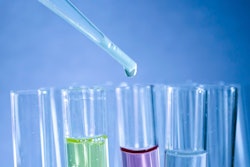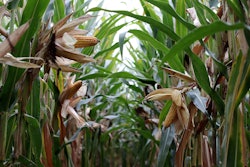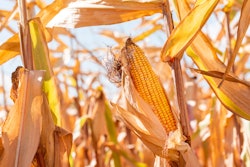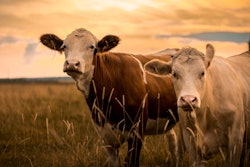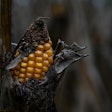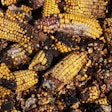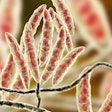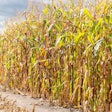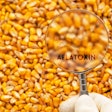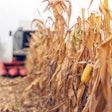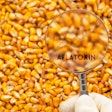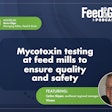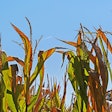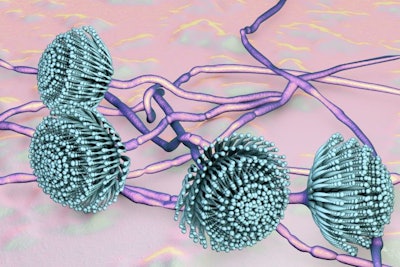
Ann Reus: Hello and welcome to the Feed Strategy podcast. I'm your host, Feed Strategy senior reporter Ann Reus.
Rudolf Krska is professor for analytical chemistry at the University of Natural Resources and Life Sciences in Vienna and also a professor in the Institute for Global Food Security at Queen's University in Belfast, Northern Ireland.
Along with collaborators Mari Eskola and Chris Elliott, Krska wrote the book, "Toxin-Free Food? Health risks and benefits of our food." The book discusses the potential toxins to which we are exposed every day in our foods.
Whether you are interested in animal or human health and nutrition, or both, I recommend this book. It's a quick read and very interesting, if not a little scary at times.
I recently spoke with Rudolf Krska about this book and the topics it covers. Here's our conversation.
Hi, Rudolf. Thank you for being here.
Rudolf Krska: Yeah, thanks. I'm glad to have this conversation with you.
Reus: What made you and your co-authors want to write this book?
Krska: Well, the starting point of this book was actually at the invitation of the mayor of the city of Vienna to give a presentation on toxin-free food, question mark, in the Vienna City Hall. And this has been quite a success. There was a lot of response and then the city of Vienna asked me whether I would be interested in also reading a book on the same subject. And the motivation for us as co-authors, and me as main author of the book, was to come up with a more holistic, but also with a more realistic point of view, in relation to the risks which we are exposed to when consuming food because I think there's, in many areas, a wrong perception of the real risks vis a vis some risks which are actually completely ignored, such as mycotoxins, and also finally to come up with a risk ranking, which food authorities would never dare to come up with, for kind of understandable reasons. And that risk credit ranking should also provide some guidance on the real threats and associated risks, which can finally also serve as a guidance for consumers and stakeholders.
Reus: What are some of the toxins that are commonly present in the meat, milk and eggs we consume, and what can the producers of those products do to minimize that exposure?
Krska: Well in relation to toxins, especially mycotoxins in meat, milk and eggs, the story is relatively simple. Since there is hardly any significant transfer/carryover other than aflatoxin B1, I'm not talking now, research results, I’m talking now about the findings of food authorities such as the European Food Safety Authority in relation to the risks for the average adult consumer. So, for the average adult consumer, it will be only this aflatoxin a topic of interest. We have a transfer from aflatoxin B1, which is a Type 1 carcinogen, so defined by the International Association for Research on Cancer. So, it is one of the most carcinogenic substances we know of, and aflatoxin B1 is actually transferred into the milk by a ratio of one to 100. So if let's say you feed your dairy cows with the limit, which is established in the European Union of five microgram per kilogram, then you would actually end up with aflatoxin M1, stands for metabolites, in the milk of 0.05 microgram per kilogram. So it's 1% of these five micrograms per kilogram afterwards would be one originally being in the feed. And aflatoxin M1 is also possibly carcinogenic. And this is definitely a topic which we have seen, especially in view of climate change. We had in Europe, the so-called Serbian maize scandal where, due to unprecedented drought conditions, and high temperatures in 2012. A year later, there have been unprecedented high levels of aflatoxin B1 in the maize as a result of Aspergillus infecting the maize. This maize was also exported to Germany, there was a severe carcinogen scare because not only aflatoxin B1 was found in the maize, but also as a result, the maize was added to the feed. And as a result the cow's milk contained levels which exceeded the maximum level established in the European Union. So, this was a big story in Europe, which also showed that, due to climate change, we have to brace ourselves for more food crises to come, especially in relation to natural toxins. I mean, for other mycotoxins there has been research, mostly focusing on ochratoxin A, besides aflatoxin b1. There's also been research on human exposure to mycotoxins through meat products, which was also again targeted mainly to ochratoxin A, which is produced by Penicillium. While the potential presence of other mycotoxins has not been investigated in depth, because actually, of the very minute transfer of other mycotoxins than aflatoxin B1. So, to summarize, yes, definitely. That's a big challenge and a risk we have to face, the aflatoxin B1 transfer into milk, but for meats and milk, barbecue party, so to speak. But these are not derived from fungal origin, these are problems which are mainly due to so-called processing contaminants, toxins, which are produced during the thermal processing of the food.
Reus: And you touched on this a little, but what are some of the health consequences for humans who consume meat and milk that is contaminated with mycotoxins?
Krska: The health consequences can be categorized into carcinogens, mycotoxins, which are genotoxic carcinogens, and mycotoxins which are no carcinogens which are immunosuppressive. So, in general, if we are to consume, that’s certainly true for humans and animals, mycotoxins are immunosuppressive. So why are they immunosuppressive? Because mycotoxins are produced by the plant under stress situation. So when a plant is exposed to stress for instance, drought stress, it's it switches to its secondary metabolism. The same is actually true for fungus, a fungus can also be exposed to drought stress and a fungus is also exposed to stress when the plant is in full blossom because then the plant is strong, it can fight off the fungus which tries to infect the plant. Therefore, when the plant is strong during blossom, the fungus will not be able to get nutrients out of the plant enough to survive. So that is why the fungus will switch to its secondary metabolism, producing several toxic substances, the so-called mycotoxins, fungal toxins, and by doing so, the fungus will weaken the immune system of the plant and then be able to get good nutrients again out of the plant such as wheat or maize. The problem is that these immunosuppressive effects is not only valid for plants, but it also suppresses the immune system of humans and animals. And that is for instance true for all toxins which are produced by the fungus fusarium, whereas when we step up the escalation ladder, so to speak, then we end up with carcinogens. So which are possibly carcinogenic substances, including fumonisins, or even aflatoxin B1 as mentioned before. In other aflatoxins, which are genotoxic carcinogens because they can directly interact with the DNA, it can actually bind to the DNA and by binding to the DNA, it can cause mutations which as a result can cause cancers. So, the problem is then that for mycotoxins, which are not eliciting cancer, these mycotoxins are easy to regulate or manage by food authorities because you introduce a regulatory limit, let's say at 1,500 microgram per kilogram of the toxin in the food, for instance for deoxynivalenol, which is the most important fusarium toxin, and then research results suggest that actually at this level, we are safe. So, you will not actually suffer from any of the known toxicological effects such as nausea and vomiting, deteriorated immune system etc. However, especially for genotoxic carcinogens which indirectly interact with the DNA such as aflatoxins, there is no level low enough so that we can rule out any toxic effects. As a matter of fact, one single molecule of aflatoxin B1 would in theory be sufficient to cause a mutation of the binding to the DNA and cause cancer. Certainly, however, we have a range of detoxification mechanisms. So, if a mycotoxin such as a carcinogenic one, such as aflatoxins, binds to the DNA, there are enzymatic detoxifications possible. So humans and animals, most of them, are able to actually cut out the mycotoxins bound to the DNA for instance, to guanine, which is the base as part of the DNA, cutting that out and, by doing so, replace this situation and there is no mutation and no cancer which can be elicited. Why do we know that? Because with modern analytical chemistry, we are able to detect this. So the mycotoxins bound to a base of the DNA, such as aflatoxin, guanine, will then be excreted by the urine. And even if it would not be cut out there’s still all sorts of immune cells, which can could fight off the cancer. So, summarizing, extremely low levels can still cause cancer, but this is rather unlikely. So that is why we have to distinguish between the average adult consumer who should be pretty safe. Toddlers, young kids or vulnerable persons, their immune system can be weakened, can be much less strong and, as a result of that, we have lower limits for the maximum concentration of all the mycotoxins for, especially for young kids. And that is certainly also true for babies.
Reus: Your book makes some scary statements about toxins that might be in many of the foods that we routinely consider important parts of a healthy diet, such as nuts, dried fruits, preserved meat, cheese and grains. Should we be avoiding some of these items that we think of as healthy?
Krska: Well, that's exactly hitting one of the purposes of this book to try to get a better understanding on the risks versus the benefits. So, can the risks maybe be outweighed by some of the benefits? I mean, there's been a lot of discussion in relation especially to red meat, as I think everybody is aware of, and red meat has even been classified as probably carcinogenic to humans. So that’s been classified by the International Agency for Research on Cancer as a group 2A carcinogenic, so probably carcinogenic to humans. And, however, we have to say that red meat is an important natural source of vitamin B12 and those other B vitamins as well as also minerals. So, also let us not forget that human bioavailability of minerals is also higher in red meat, than in plant-based foods, and however, the topic of red meat is further kind of exacerbated through the topic of processed meats such as ham or sausage. So processed meat has even been classified as is carcinogenic to humans. So it actually has been classified by the International Agency for Research on Cancer as Group 1 carcinogen. However, that is not too much only can be traced back to meat, but many chemicals in the meat, including those which are produced during the cooking or processing can potentially cause cancer, such as iron protein complex, heme iron. So however, it is a little bit kind of complicated. To date, there has been no comprehensive risk or benefit assessment for red meat consumption. So that is why you see how difficult it is to answer your question right to the point when discussing this topic on the red meat. Should we avoid these charcuterie boards, then? Well, for some reasons, yes, for some reasons, no. So it's, again, the answer is you should not avoid it. But you should try over, let's say the course of a week, to look for a more balanced diet. So it's by introducing variety in your food, by having this this diversity, by not only eating red meat but also having foods on your plate, fish etc. That way you can both maximize your benefits but minimize your risks. For dried fruits, which you have also mentioned, that's definitely something which is the for the average adult consumer because dried fruits such as dried figs have quite a likelihood to be contaminated again with aflatoxin B1, again, a carcinogen. So this is particularly difficult to monitor. In fact, each single fig has to be checked under UV light. Aflatoxins show fluorescence activity, and therefore, this will show inflorescence activity under UV light can catch it. But definitely we need better sorting systems in order to be more efficient. And well in relation to milk I've already mentioned before the increased risk for aflatoxin M1 in milk. In view of climate change, we have to brace ourselves more for proper monitoring. And as we know from the melamine scandal, there is, in relation to milk powder, but that's not that's not restricted to milk only. There's always a possibility within globalization of food fraud, that particular food items can be contaminated. Melamine is a substance which actually is an insecticide, which contains a lot of nitrogen in its molecule, in its structure. And through this high number of nitrogen in its structure, it can mimic a higher protein content because when milk powder is checked for its protein content, basically what analytical chemists are doing, they're calculating the percentage of the nitrogen in the milk powder and then extrapolating or calculating. So, well, if you add melamine for pure greed in order to maximize profits, you can actually fake a high protein content. However, this melamine cause severe kidney stones and as a result have even babies and young kids died, especially in China. So we also have to brace ourselves for upcoming food frauds. But that's definitely not an argument to avoid milk, because a criminal activity can happen anywhere. And you would also go outside on the streets, although you could potentially be hit by a car. But in a food safety system, certainly, everything is being done in order to minimize these risks.
Reus: Right. And your book is subtitled, "Health risk and benefits of our food." and you've talked about how we should be balancing those risks and benefits. Are there any foods that you personally avoid because you feel the risks outweigh the benefits?
Krska: Well, for me personally, I try to expose myself to a great variety of different foods. So I try to achieve a balanced foods on my plate. So I try to combine plant-based products with fish and with fruits and vegetables. But I also eat red meat, I certainly maybe have a higher vigilance for moldy products so such as molds on nuts, that definitely a no go. So I had the situation that a friend of mine brought me from Iraq, from a market there, peanuts, which showed already signs of Aspergillus in the plastic bag these peanuts were put into, and that's definitely a no go for me as a mycotoxin researcher or analytical chemist, but should also be a no go for any consumer. So I also try to increase the fiber content of my foods, although being aware that fiber contents does also increase the mycotoxin content. However, the increased fiber content definitely by far outweighs the mycotoxin content and certainly what I also have reduced in the past was I ate less processed meat because of processed meat being actually a Type 1 carcinogen. So I think that's something which is in line with recommendations. I mean there’s also a recommendation that about one to two servings of fish and seafood per week has also been associated with a lower risk of mortality from coronary heart diseases in the adults and the fish may also counteract the negative effects especially of methyl mercury exposure in humans. As a matter of fact, methyl mercury is another reason for being aware, and also direct to the effects of climate change, warmer water reduces the salinity of oceans and facilitates the methylation of mercury which actually in turn increases the uptake of this methyl mercury and also other heavy metals by fish and shellfish. And that is why there's also recommendations by different countries, yes, eat fish but also have some variety of fish. Don't always eat the same type of fish, but also try to get a variety in the different fish products. And it certainly was true for vegetables and fruits, have some very variety there as well. Vitamins, minerals, flavonoids, carotenoids, fiber content proteins. But again, on the downside, they, these vegetables and fruit can cause allergens. There is also anti-nutritive substances, including lectins in legumes such as beans or peanuts, but also in whole products, which can impair the absorption of calcium, iron or phosphorus. So there's also downsides. It's always like there's a benefit and there's also a downside to most of the food so that is why having in mind the risks and the benefits of the different food items and also food ingredients is a good way also to have the right composition of your food. And there's a lot of guidance which you can get from not only from books but also, I guess the same is true for U.S., I know from Europe there’s also the Food Safety Authority, and national authorities are providing very good guidance as to achieve a balanced and healthy diet, and I can definitely recommend to look into some of these recommendations.
Reus: OK. Well, thank you so much for talking with me today.
Krska: Yeah, thank you very much for your interest.
Reus: You can find "Toxin-Free Food? Health risks and benefits of our food" through all major online booksellers, and it is also available as a downloadable ebook. It is published in English and German, and is scheduled to be published this year in China in cooperation with the Chinese food safety authority.
Thank you for listening. I'm Ann Reus for Feed Strategy.


